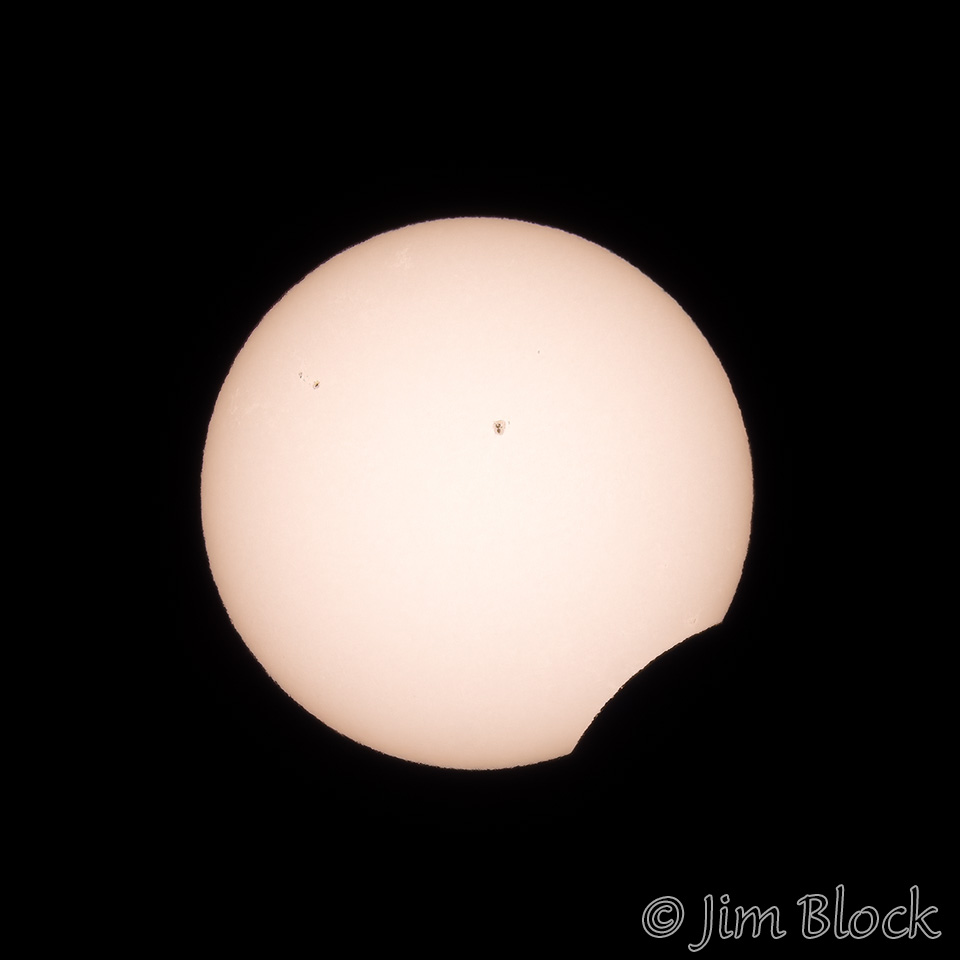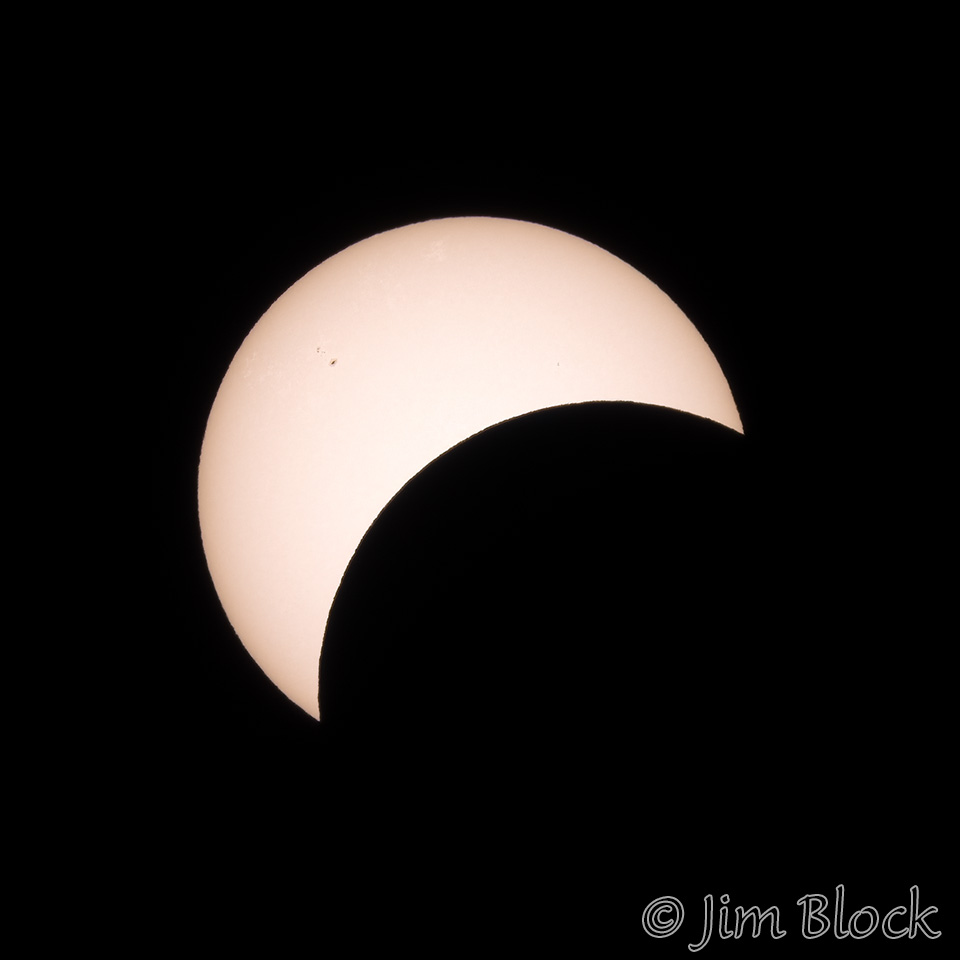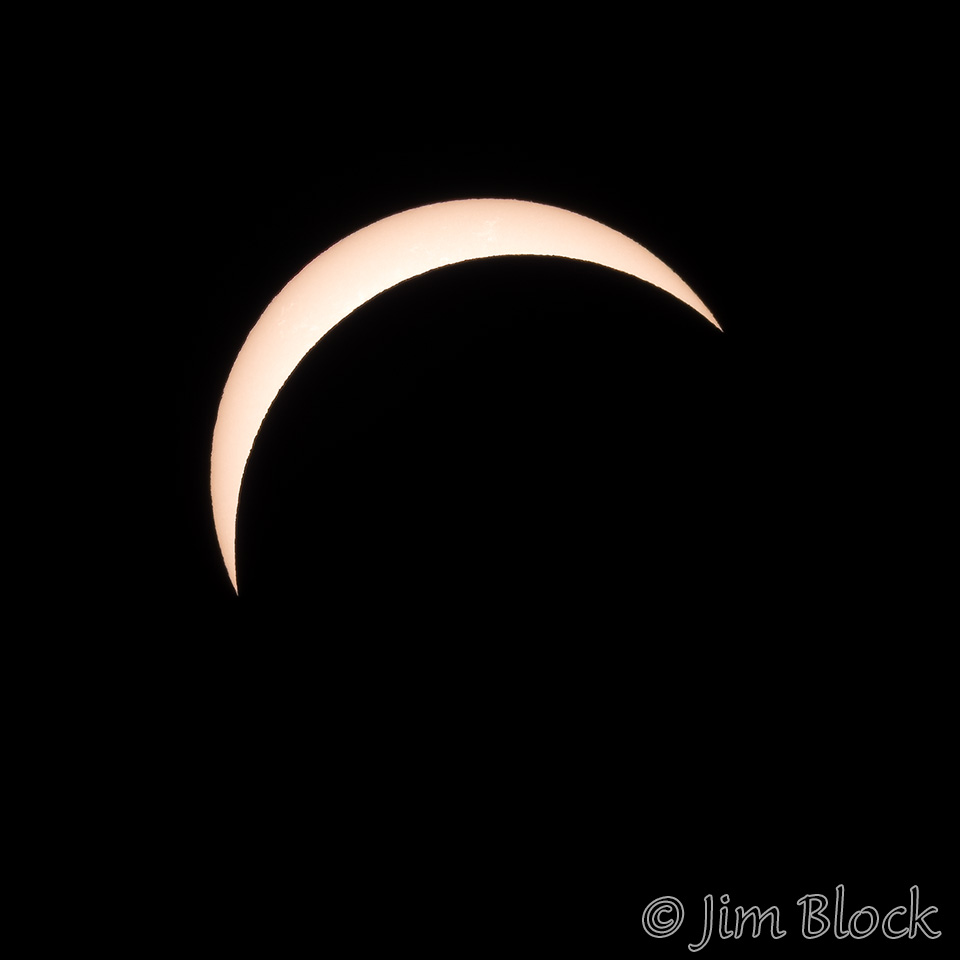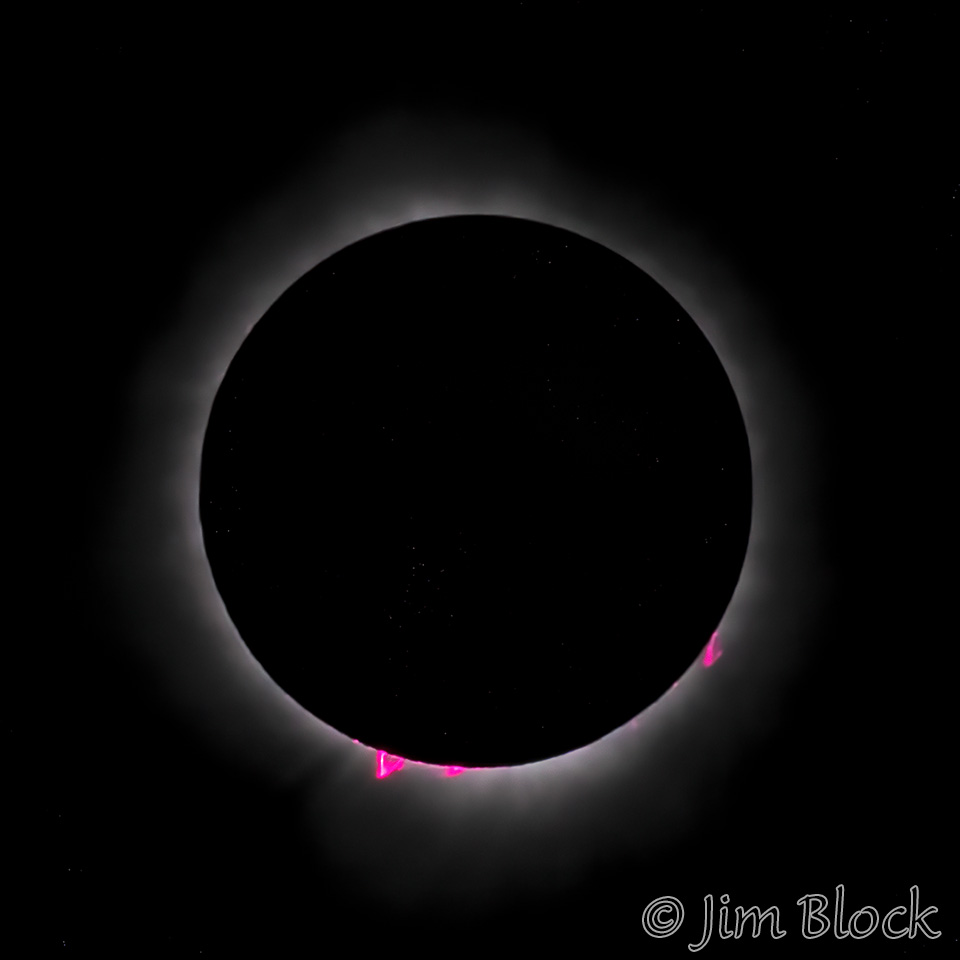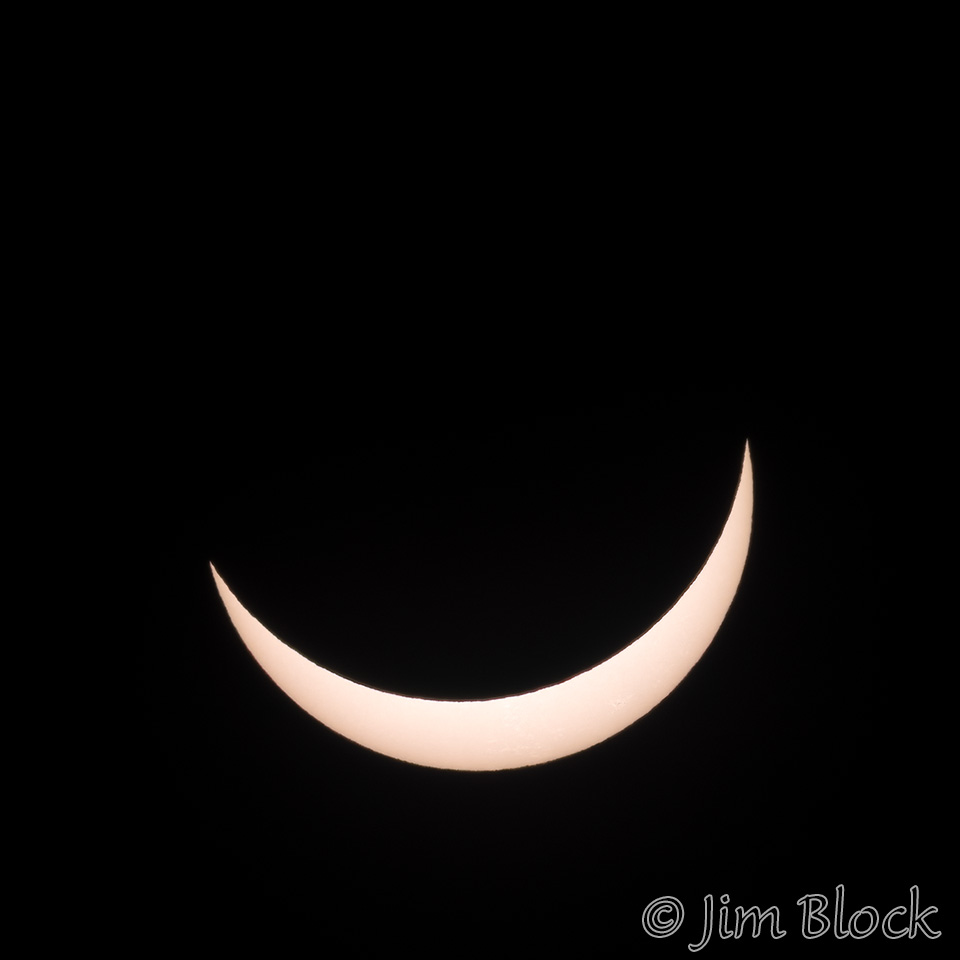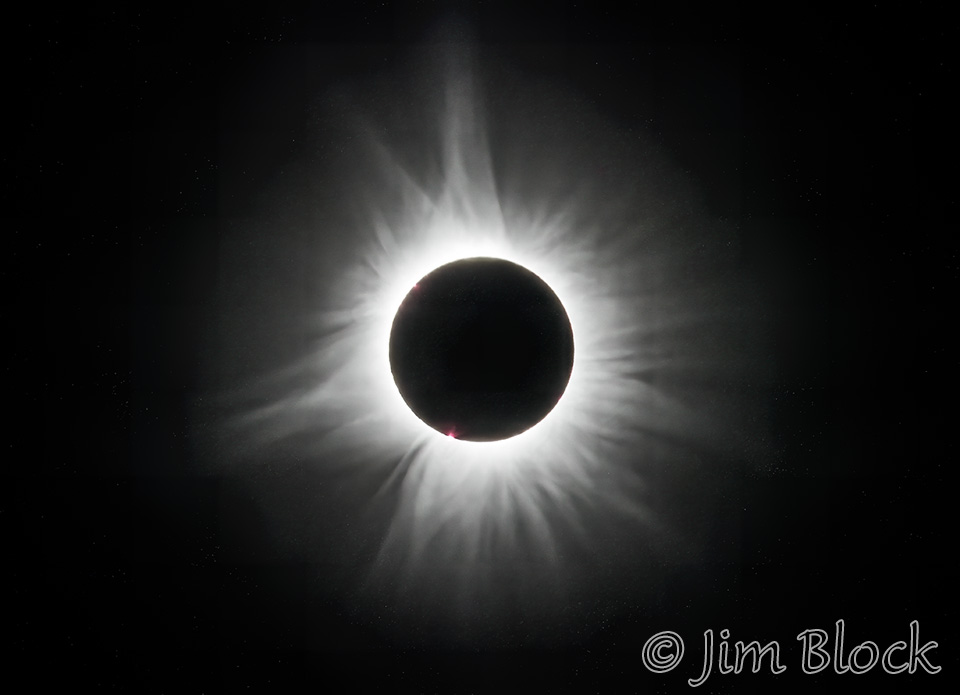
The solar eclipse was an unforgettable experience. It is hard to describe the thrill of experiencing it. Absolutely amazing. We had possibly the best viewing conditions in the US, in spite of the long odds for clear skies in April in northern New England.
The image above shows the corona at totality. But at totality it is visible.
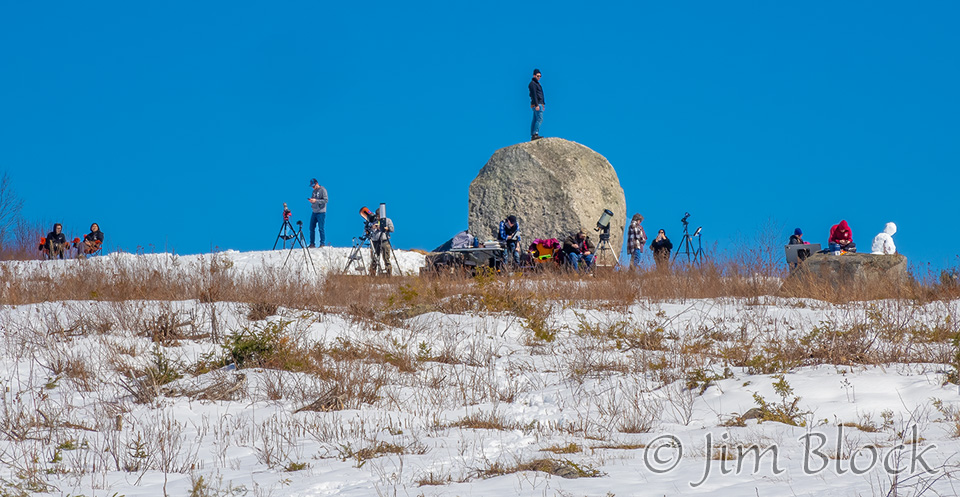
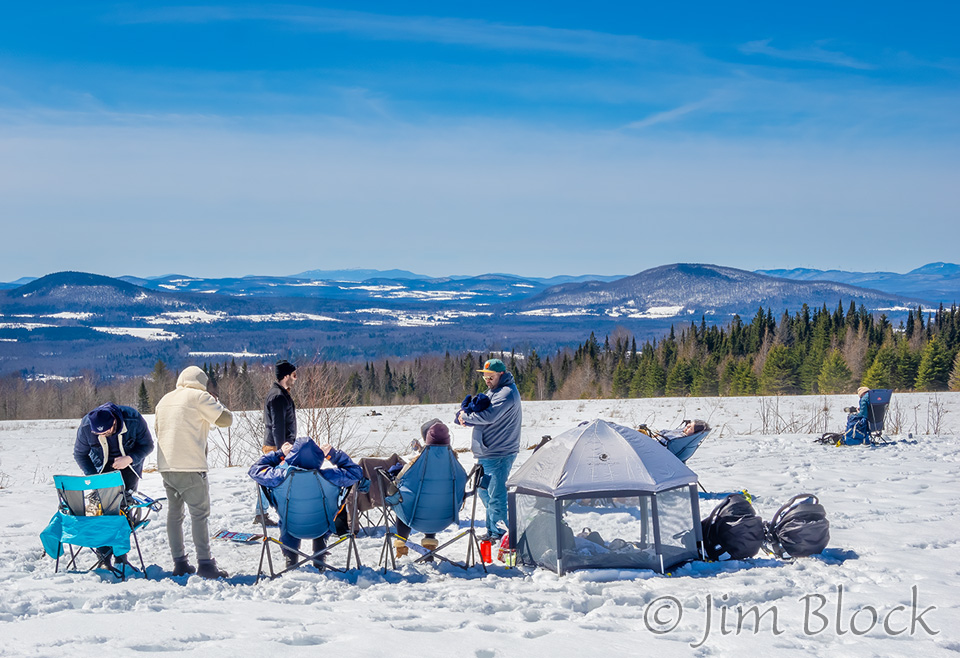

This was not his first eclipse. He had an impressive collection of gear as seen below beyond his wife and dog.
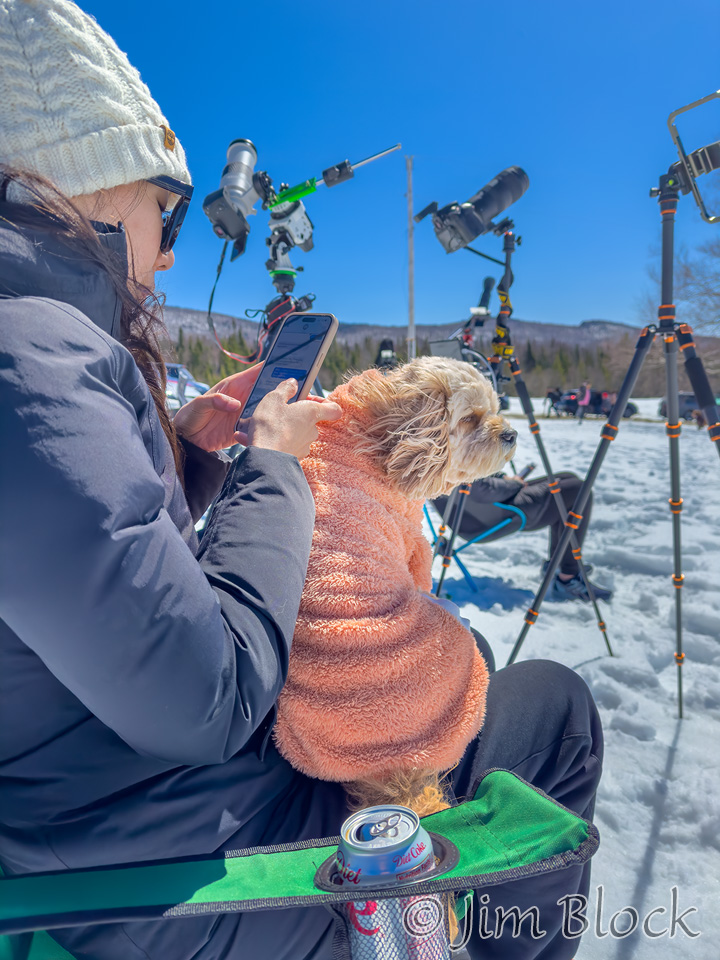

Here she is sharing photos with her dog.
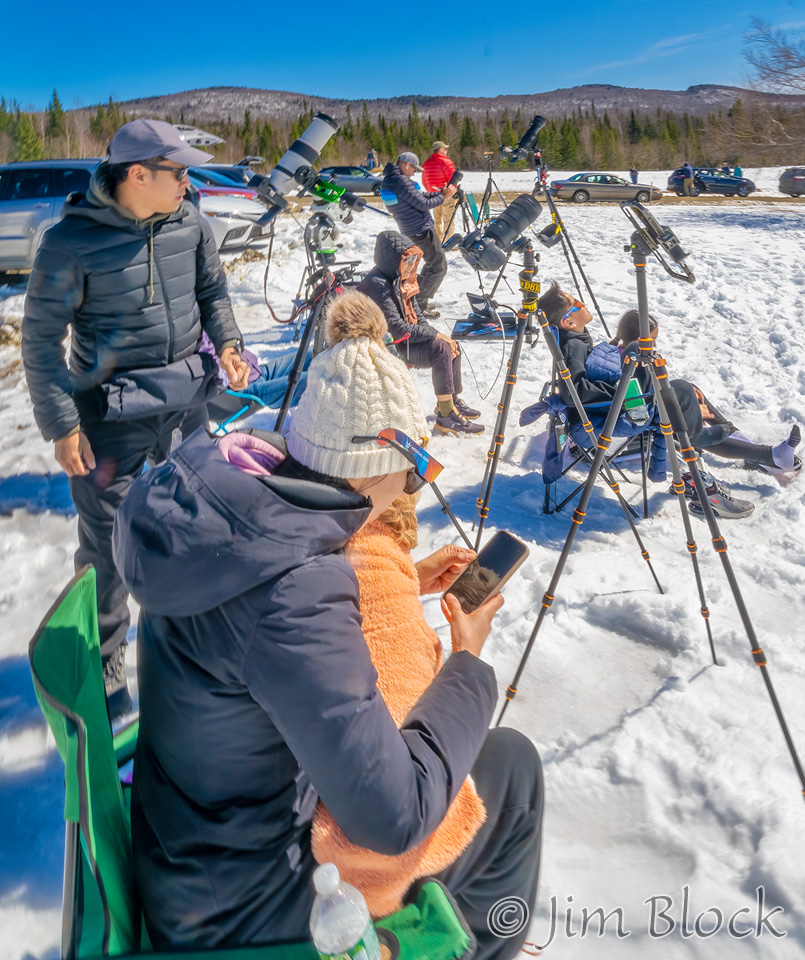
After several hours wait, the eclipse started. I photographed the image of the partly eclipsed sun on my camera monitor with my iPhone. In the photo below my phone is reflected in the monitor. The part of a circle to the left of my phone is the reflection of my hat. My camera is to the right.
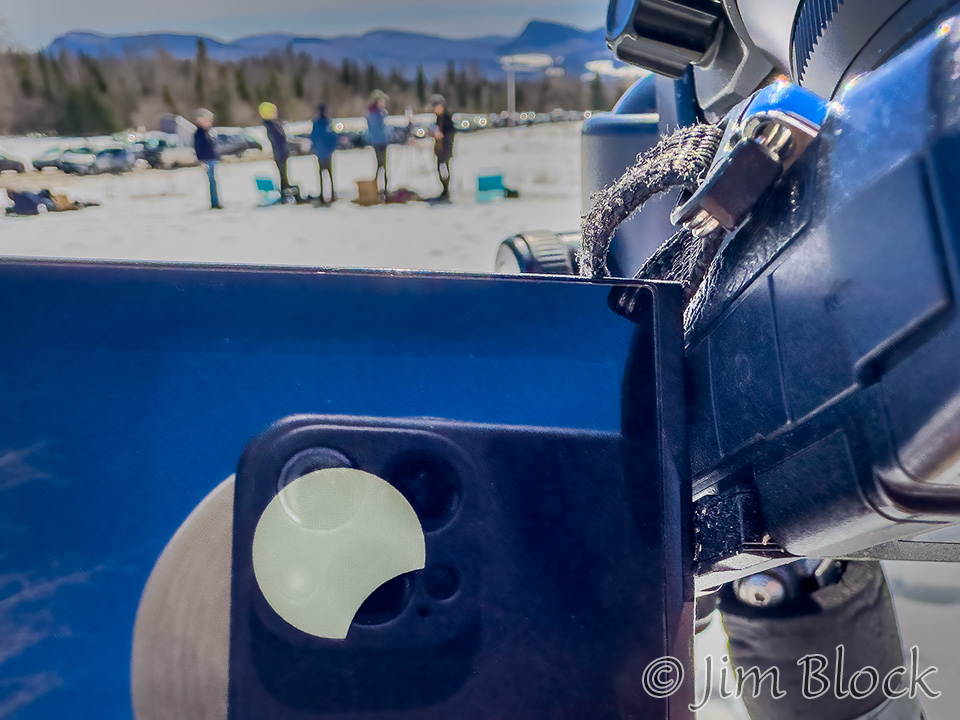
The partial phase lasted over an hour. It gave plenty of time to build up expectations and to view the moon hiding the sun through glasses and my eye-safe mirrorless camera.
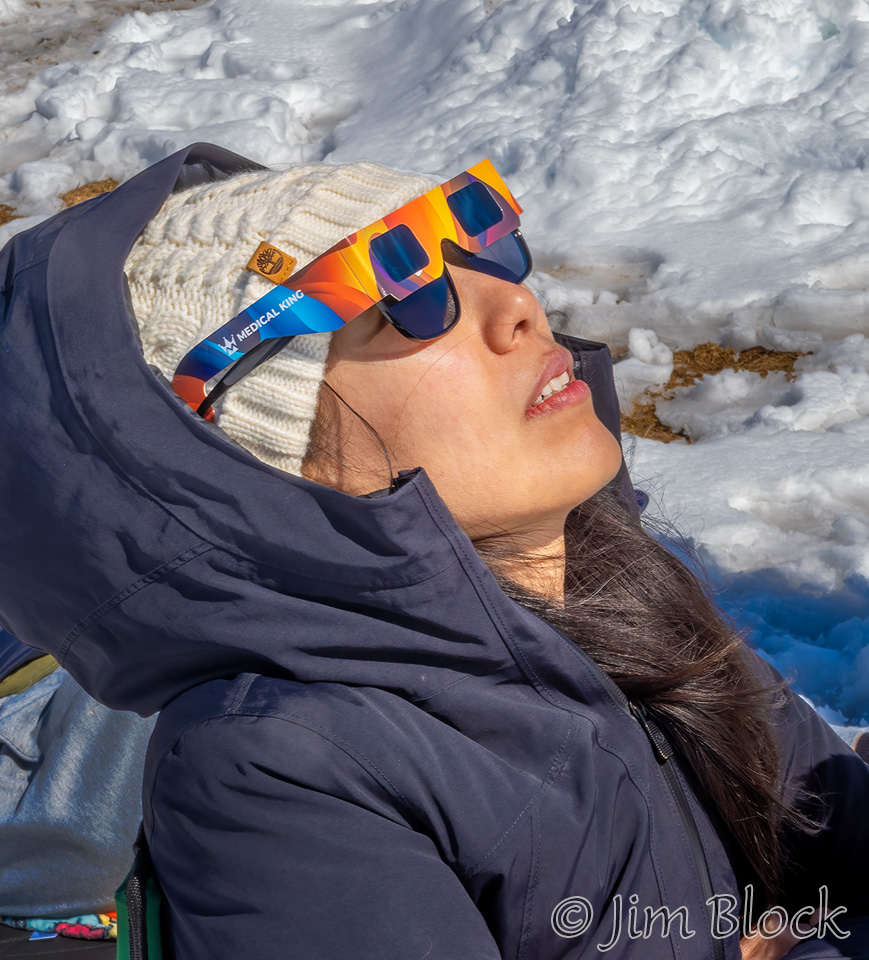
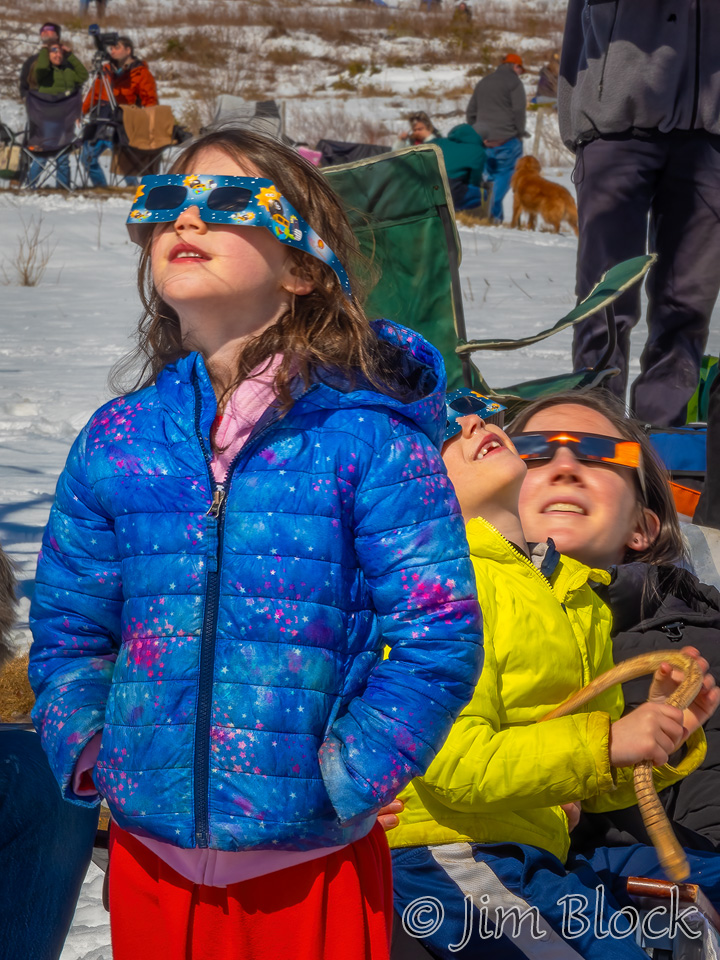
The photo below was taken shortly before totality. The few light clouds were well off to the west and caused us no problems.
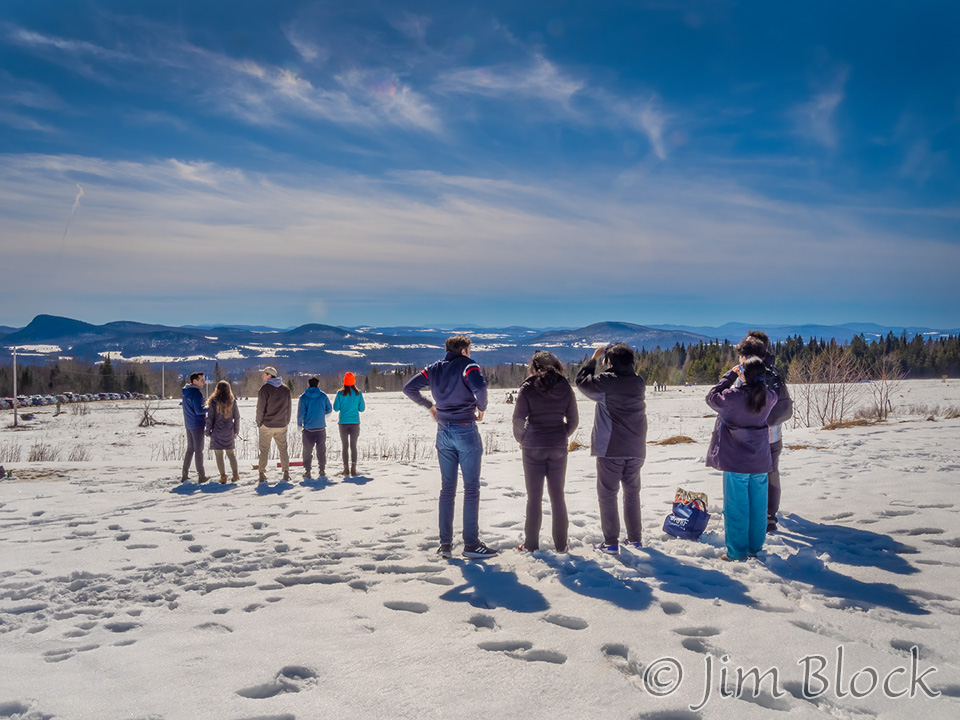
Near the end of totality I finally paused photographing the sun to take the photo below. The western sky turned an amazing yellow. If you look carefully you can see a bright white dot in the sky that is the sun.
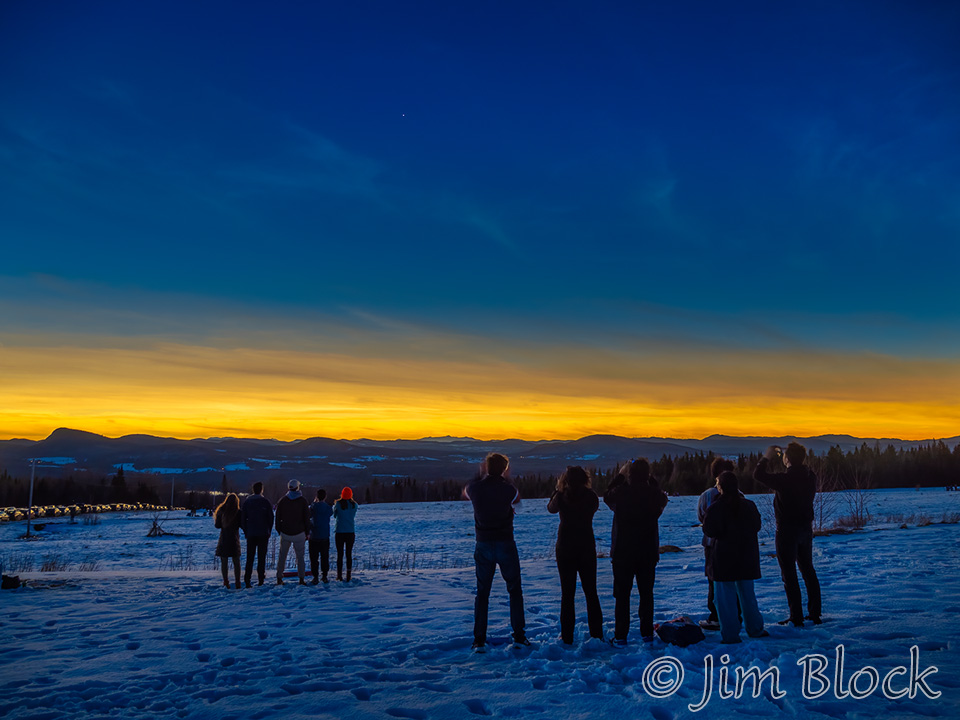
This photo shows the location of the sun inside the circle.
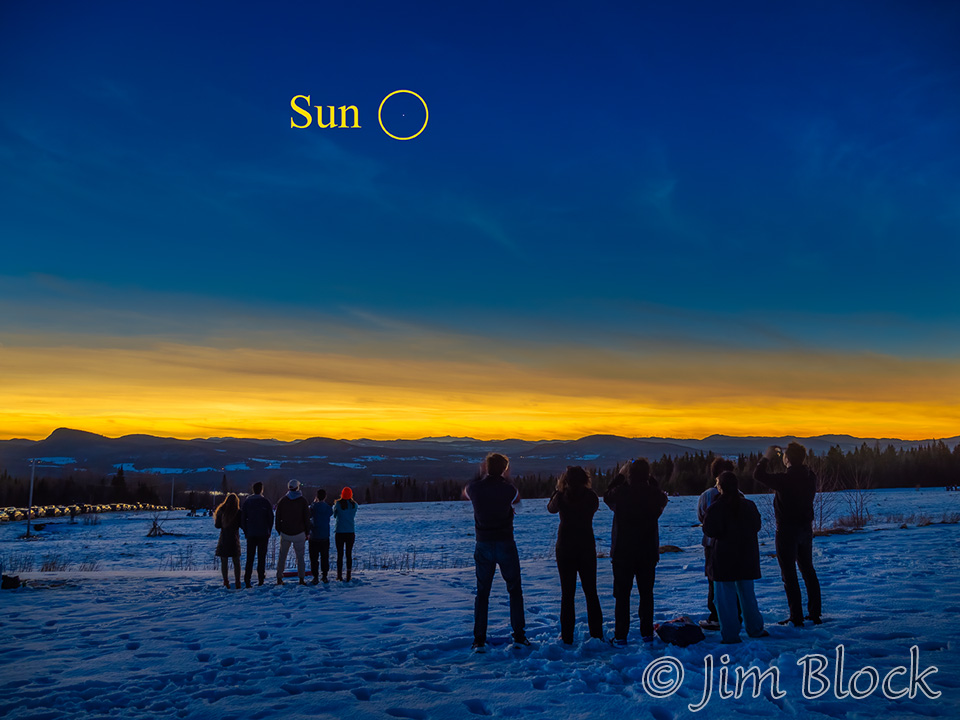
At totality I photographed the couple from Philadelphia at f/4 and 1/8 second. His gear was on auto control, so he could watch the eclipse without constantly tripping his camera shutters.
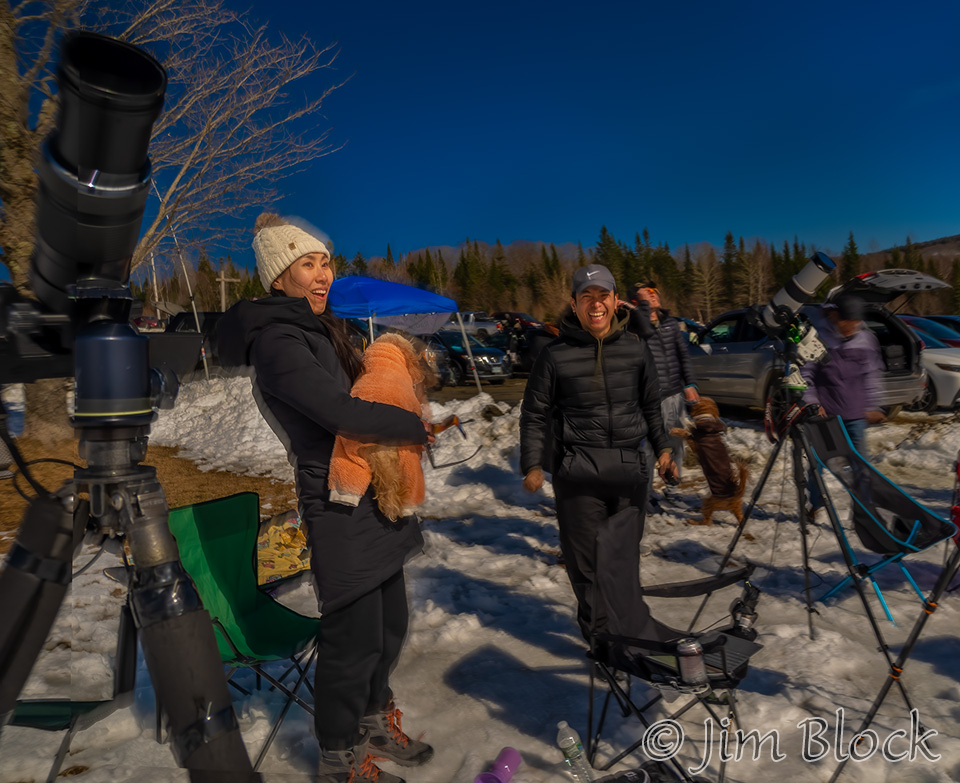
Here is a sequence approaching totality, at totality, and just beyond it. The first four were taken about 20 minutes apart. The last three about 10 minutes apart. In the photo at totality you might be able to spot the red of a large prominence, a plasma structure on the sun.
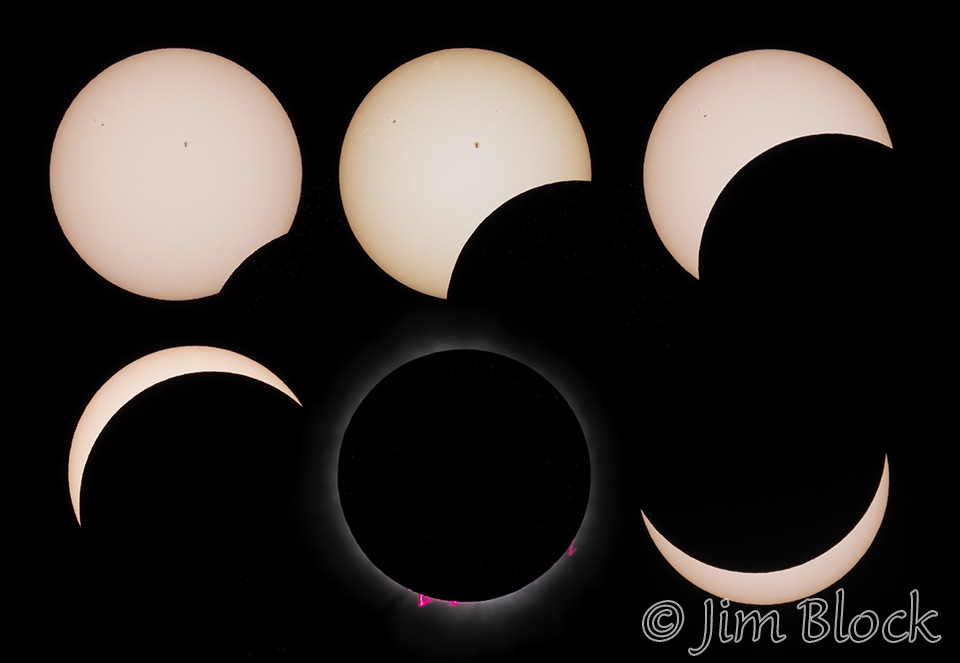
Here is the same sequence as individual images. You might be able to see several sunspots in the first two. During this eclipse sunspots were rare. I saw more sunspots from Monhegan Island late last year when smoke from wildfires in Canada partly obscured the sun and made it possible to see them.
As the sun is entering and leaving totality, a “diamond ring” appears briefly. Here it is both times.

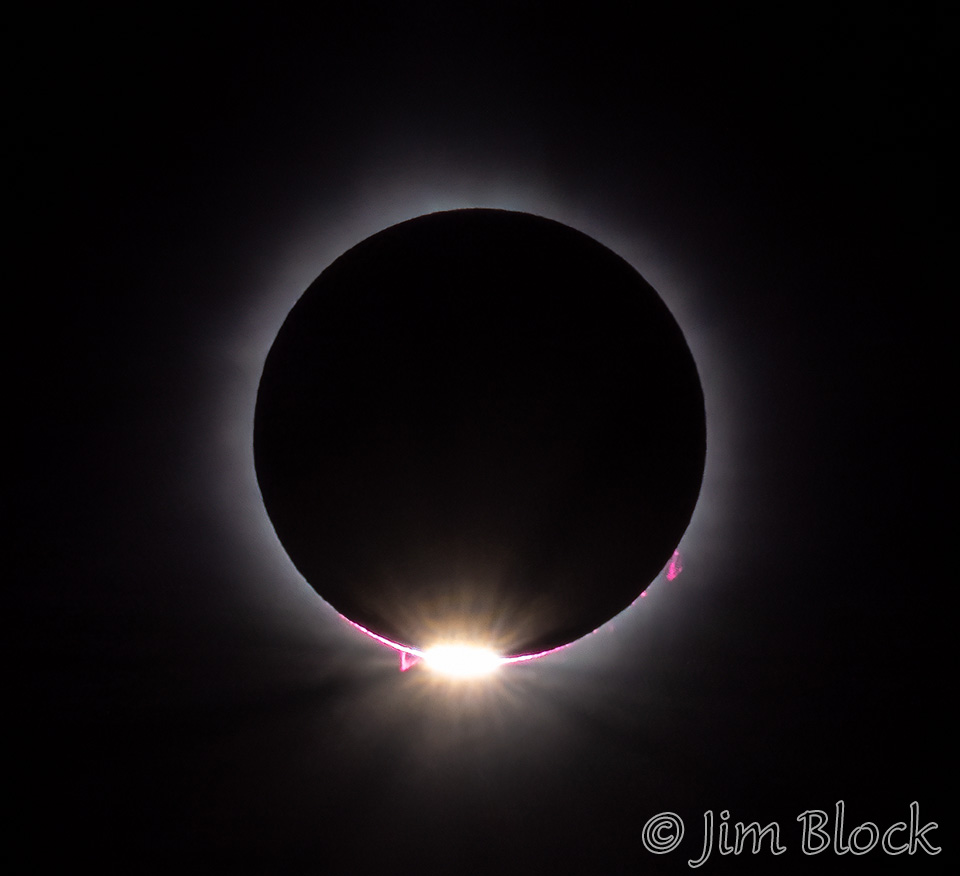
In the photos above you can see red prominences Here is a view of the fiery plasma plumes of the prominences with a minimal corona obscuring them.
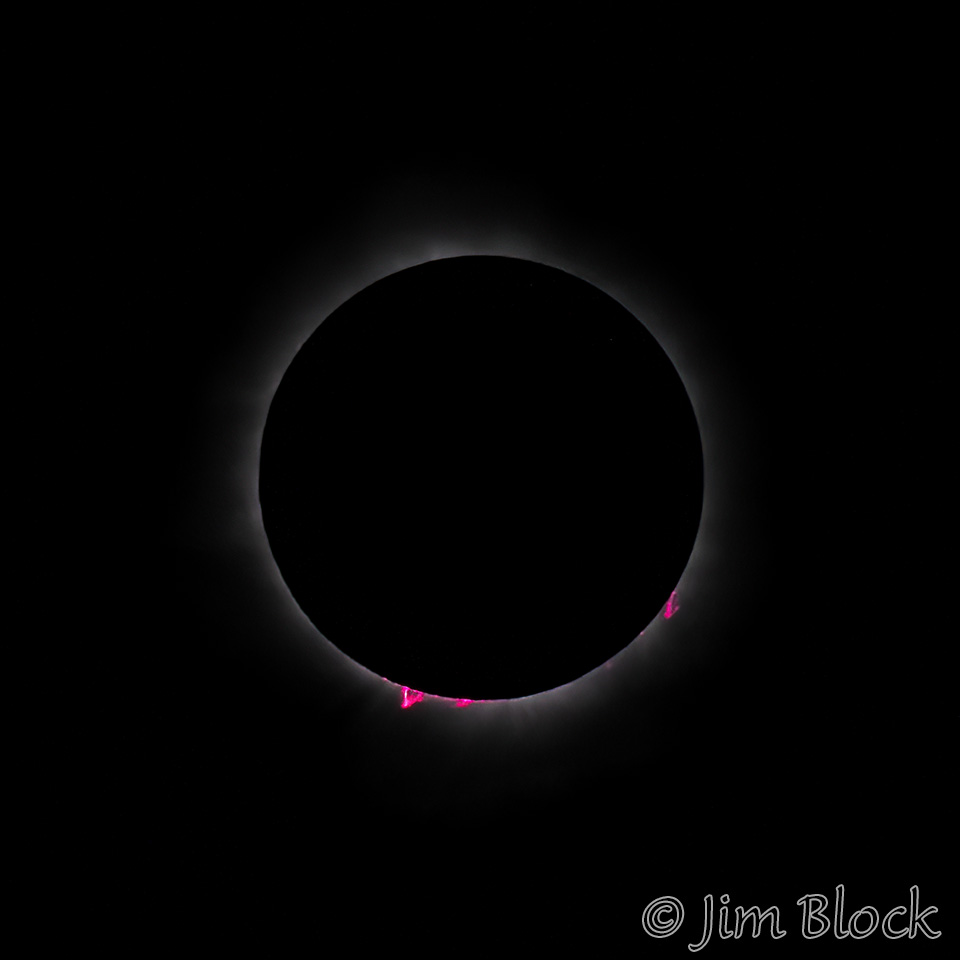
Unlike solar flares, which eject plasma as they explode from the sun’s surface, prominences are plasma structures that form over timescales of about a day. Stable prominences may persist in the corona for several months, looping hundreds of thousands of miles into space, according to NASA. (That NASA page has an amazing photo of a prominence.) Prominences can eventually snap and fling plasma into space like a CME, but apparently that didn’t happen during this eclipse.
Here are two photos showing closer views of the prominences.
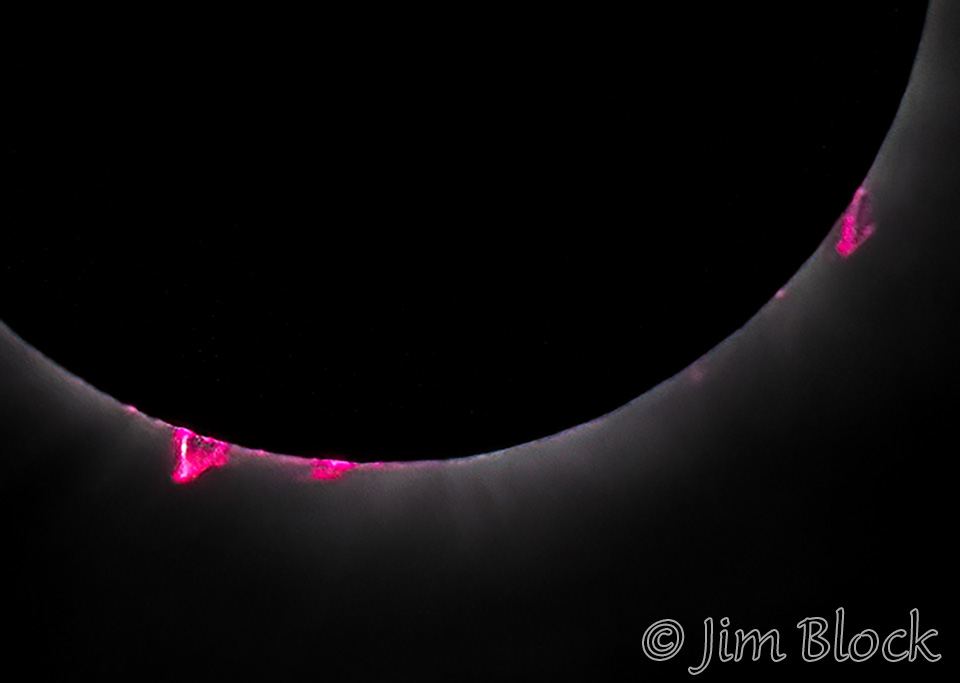
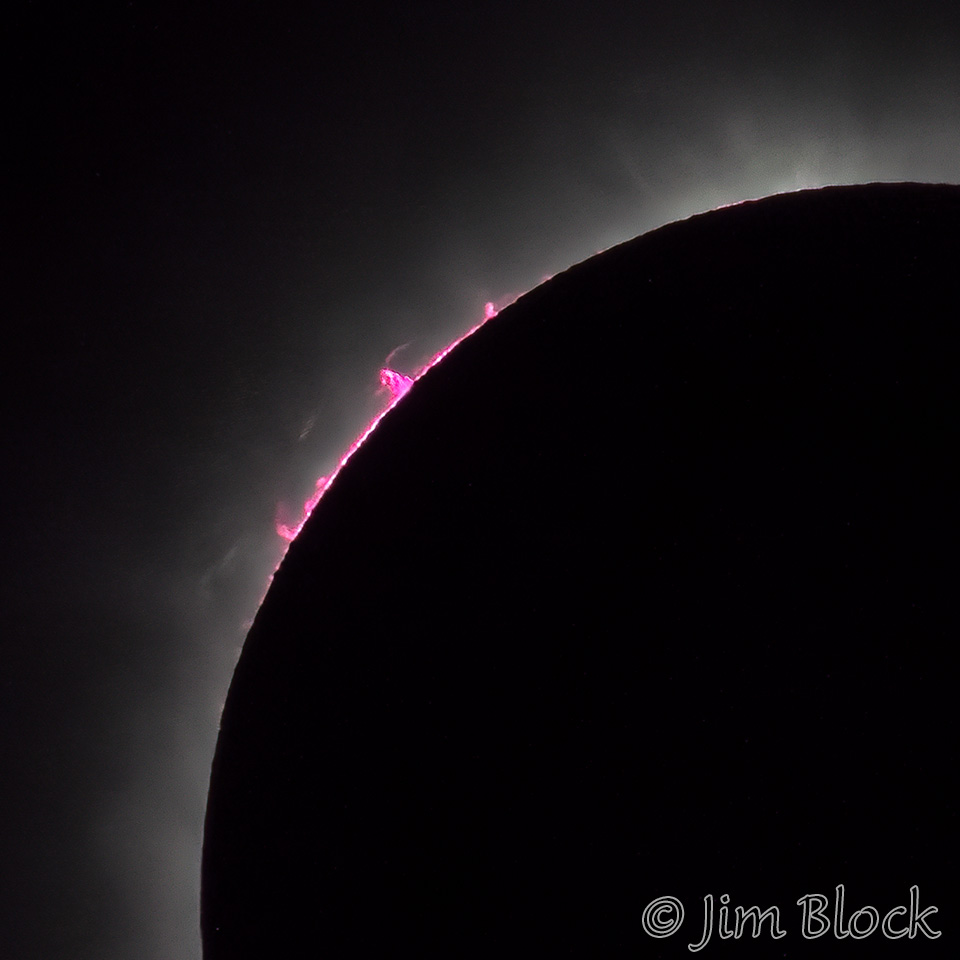
The person from Philadelphia offered to take my photo after totality.
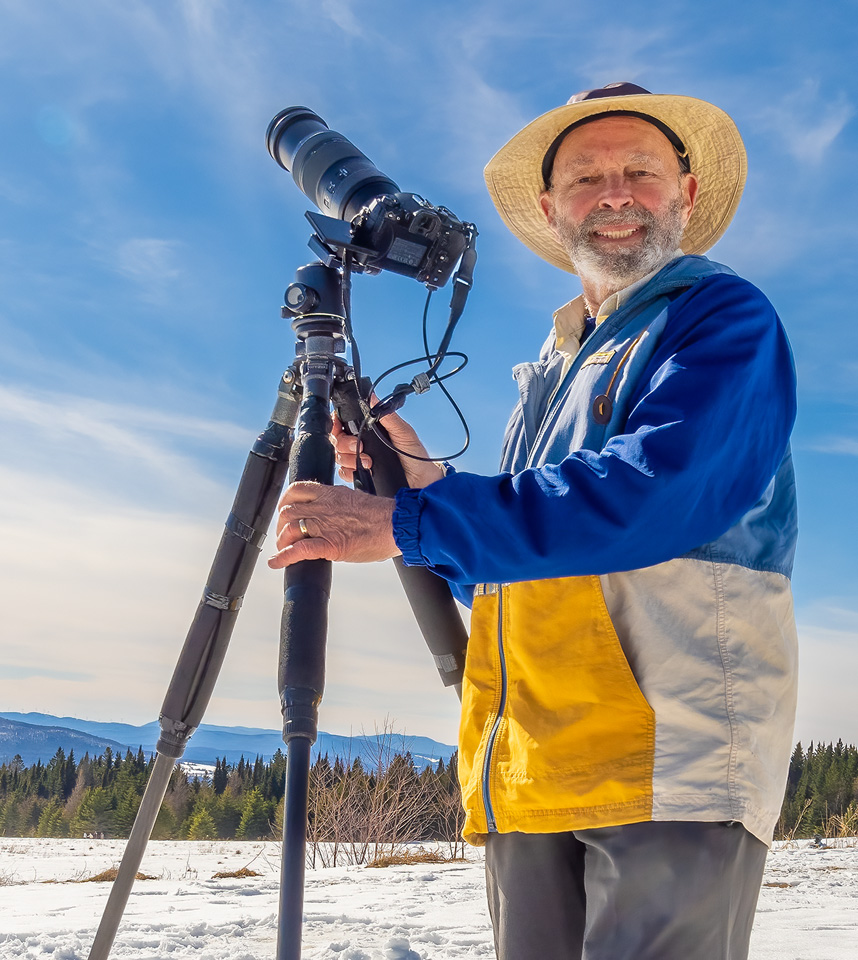
It took about 90 minutes to travel to Sentinel Rock. It took four and a half hours to get home. I saved some time by getting off I-91 — which was a slow-moving parking lot — in Barnet, crossing to Monroe, NH, and taking Routes 135 and 10 home.
I stopped briefly at the South Lawn Cemetery in Piermont to photograph the sunset of a wonderful, amazing, and unforgettable day.

For those of you who might be interested in a solar prominence, here is an extract of something from Scientific American.
A total solar eclipse is the only time when we can see the sun’s atmosphere, or corona. During during totality, for just a couple of minutes, the corona appears as a fiery white halo around the black moon. And scientists knew that the corona could be particularly interesting during this eclipse, which coincided neatly with the maximum of the sun’s 11-year activity cycle.
Those expectations were met when the sun provided a stunning prominence that was visible near the bottom of sun during totality. A solar prominence is a massive loop of the sun’s plasma that hangs attached to the visible surface of the sun, forming perhaps within a day but lasting as long as several months, according to NASA. They come in a couple of different varieties, most notably eruptive prominences, which are more dynamic structures.
Prominences often appear reddish because their plasma can originate deeper in the sun’s atmosphere, in a layer called the chromosphere, which is characterized by hydrogen at high temperatures that emits red light. By the 18th and 19th centuries, scientists were familiar with prominences during eclipses but initially believed that these features were potentially caused by clouds in the moon’s atmosphere. We now know that the lunar atmosphere is much too thin for clouds.

